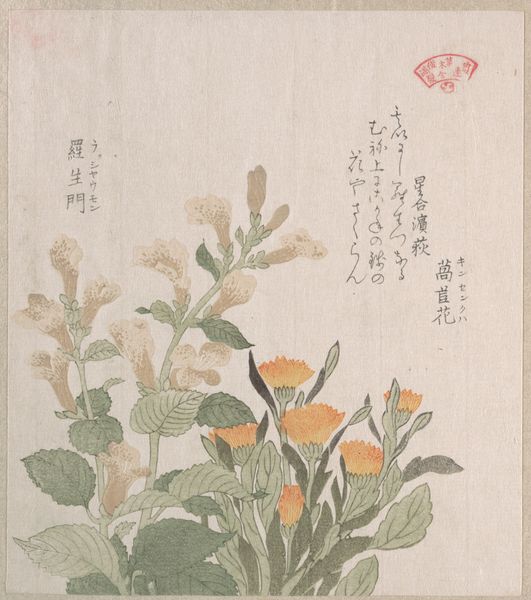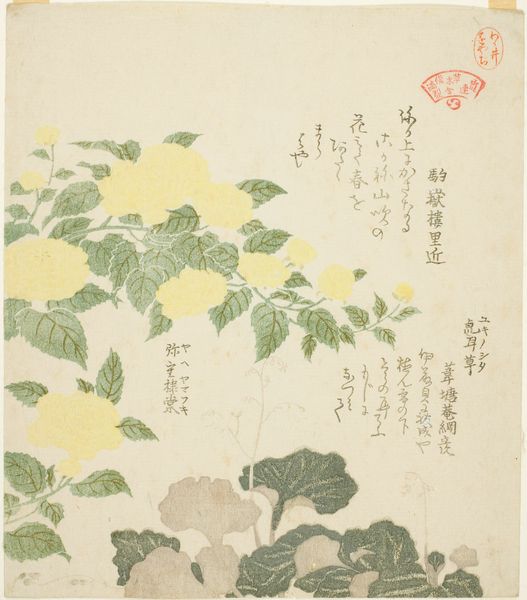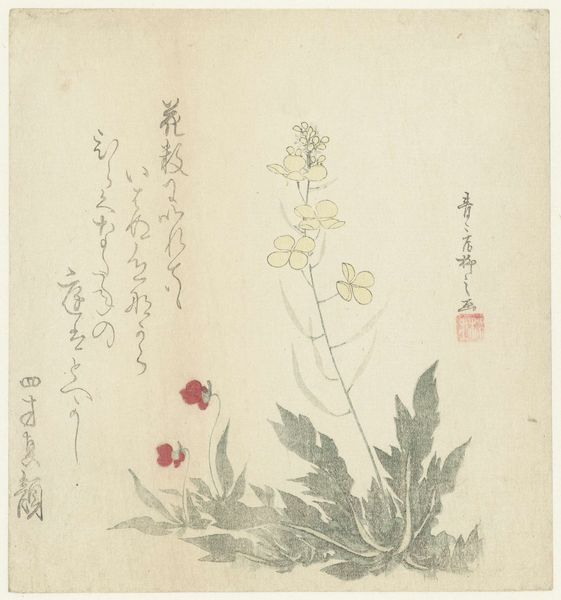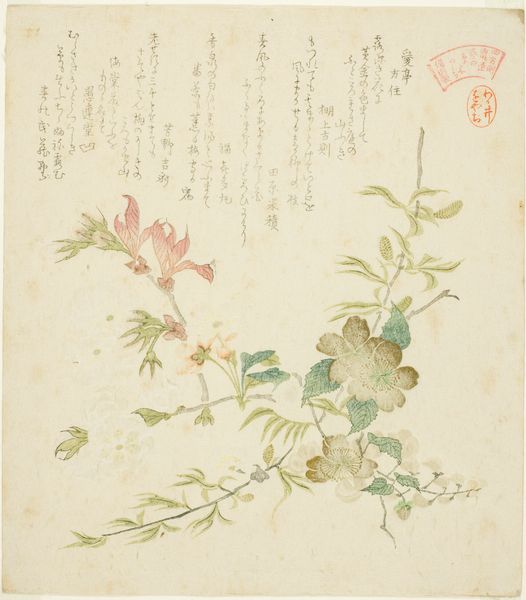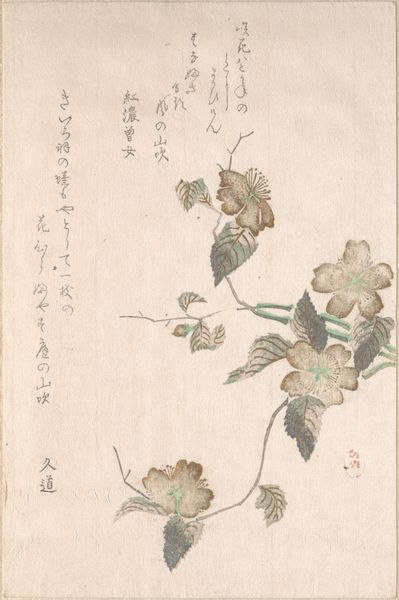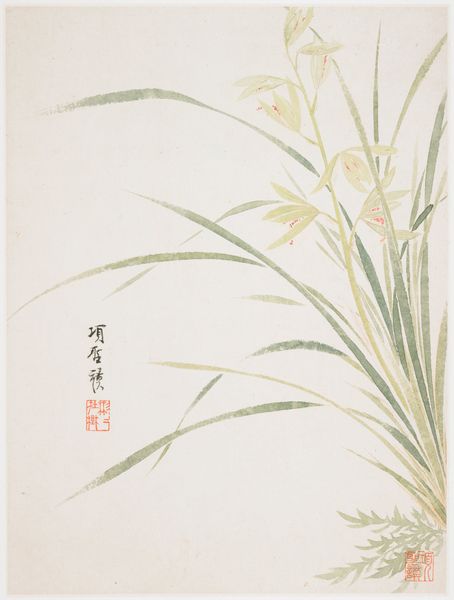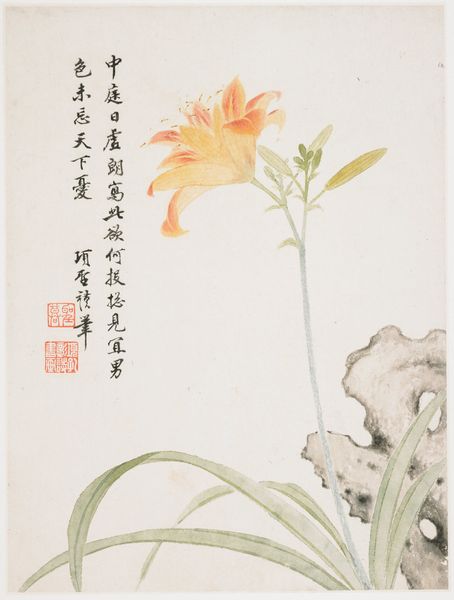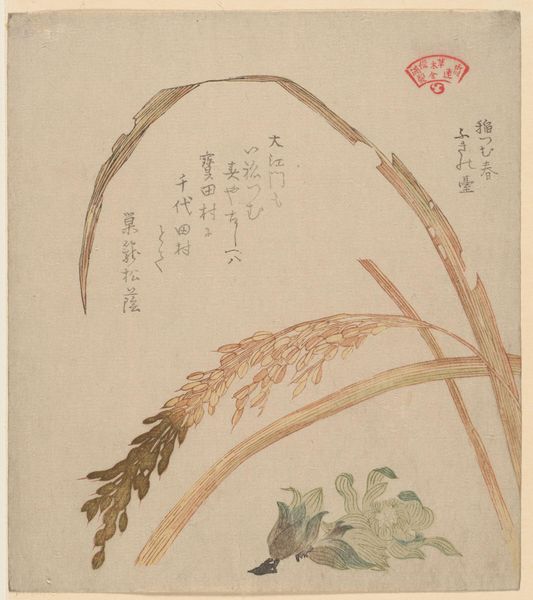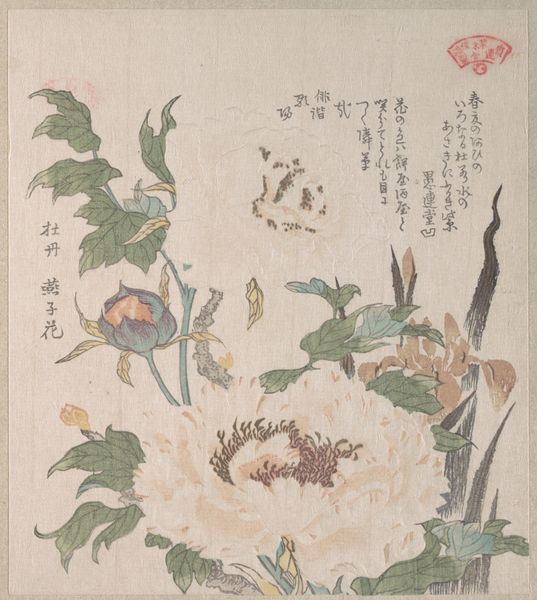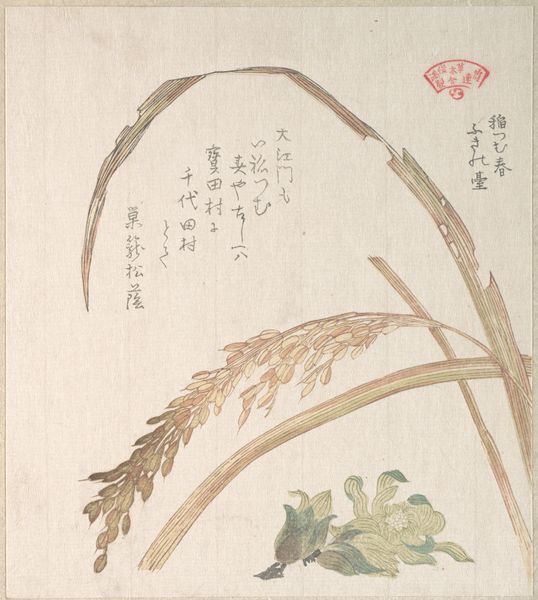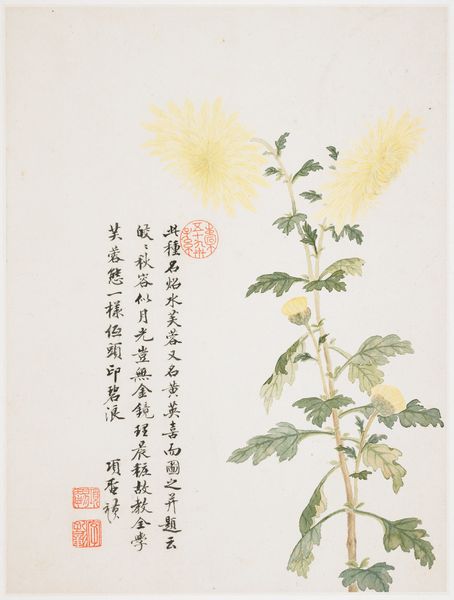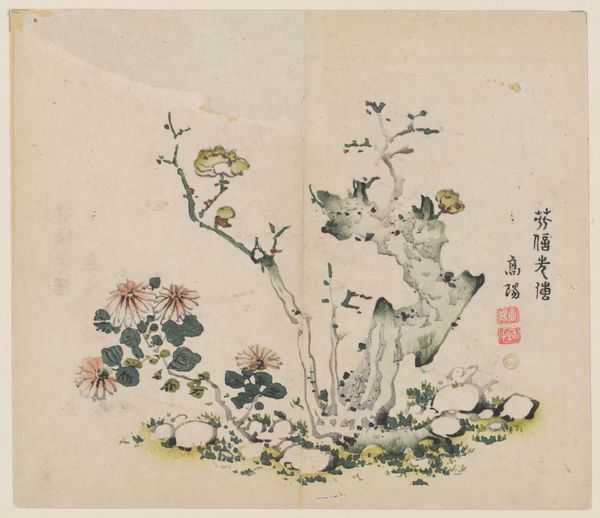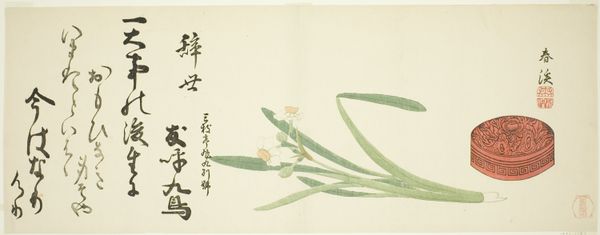
Marigold (Kinsenka) and Rashomon Flowers, from the series "Collection of Plants for the Kasumi Poetry Circle (Kasumi-ren somoku awase)" c. 1810s
0:00
0:00
Dimensions: 19.2 × 16.1 cm
Copyright: Public Domain
Editor: This is “Marigold (Kinsenka) and Rashomon Flowers, from the series Collection of Plants for the Kasumi Poetry Circle” by Kubo Shunman, created around the 1810s. It's a woodblock print on paper. I find the composition quite interesting, how the two distinct floral arrangements occupy different spatial planes. What stands out to you from a formalist perspective? Curator: The beauty of this print resides primarily in its formal organization. Notice the sophisticated interplay between positive and negative space. The artist uses delicate, rhythmic lines to define each flower and leaf. Consider also the color palette. The restrained use of color – the soft orange of the marigolds against the pale green of the foliage – contributes to the print's overall harmony and visual balance. Are these colors symbolic? Perhaps. But more importantly, they create an aesthetically pleasing experience. How do the calligraphic elements, the poems inscribed on the print, impact the composition? Editor: They seem to exist more as a textural component rather than narrative. They almost feel like another plant. How intentional do you think the superimposition of the calligraphy is? Curator: Undoubtedly deliberate. The superimposition creates a complex visual field. The calligraphy serves to activate the negative space, transforming it from mere background into an integral part of the composition. Consider, also, the relationship between the lines of the plants and of the poems. Doesn’t that suggest an intentional relationship, creating balance in the asymmetrical space? Editor: I see that now. By focusing on these elements—line, color, space—a richer appreciation of Shunman’s artistry emerges. Curator: Indeed. By attending to the intrinsic properties of the work, we move beyond superficial interpretation towards a deeper understanding of its aesthetic power.
Comments
No comments
Be the first to comment and join the conversation on the ultimate creative platform.
